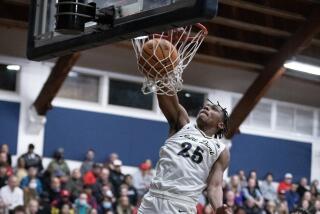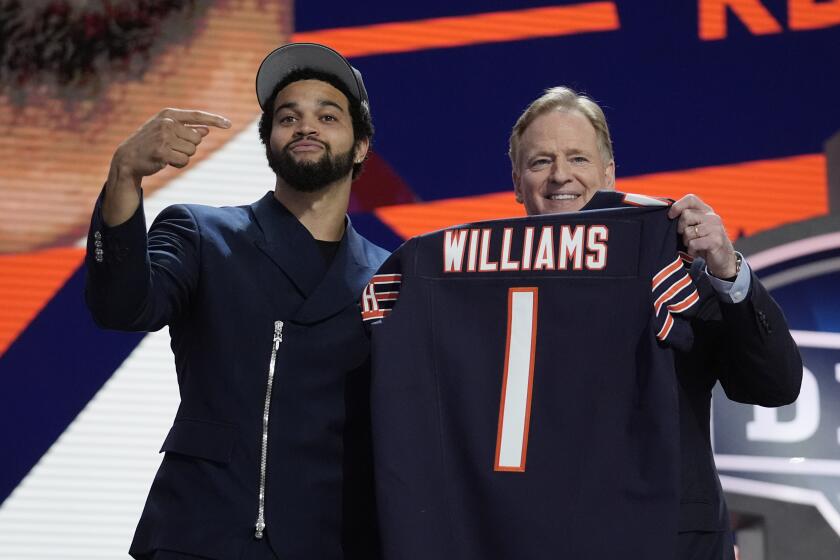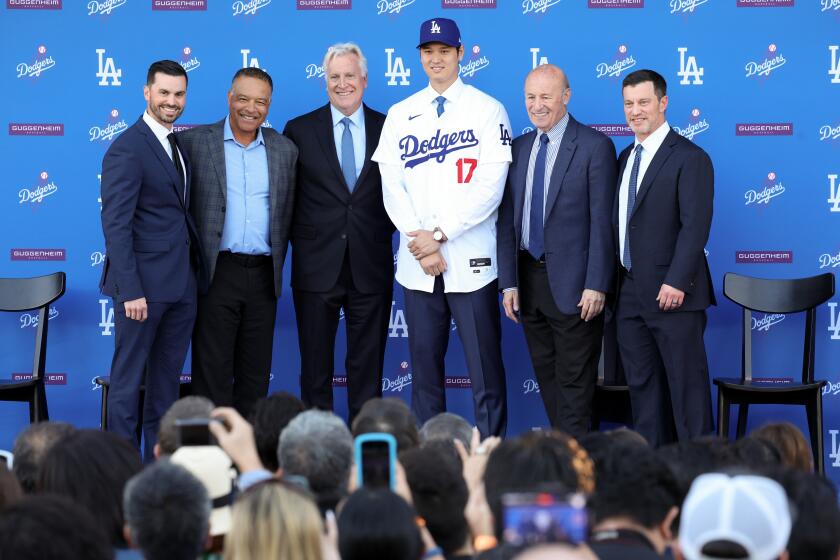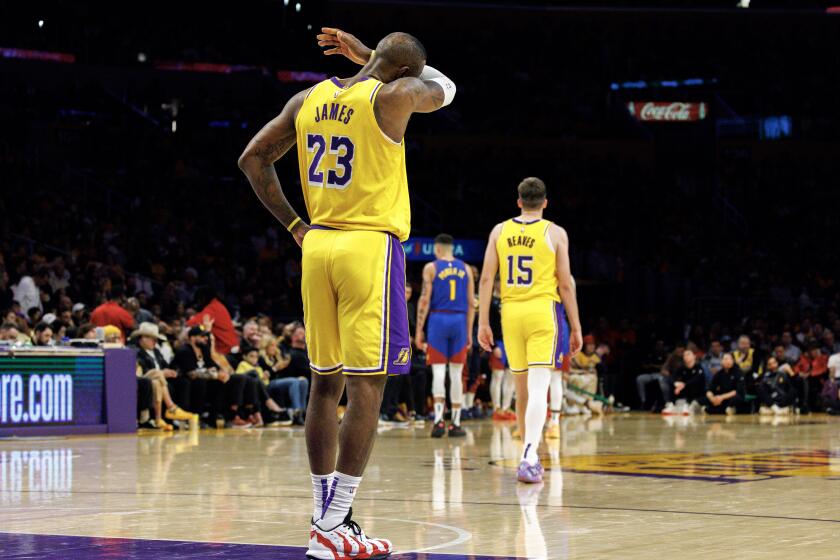They’re off and running with the shotgun formation
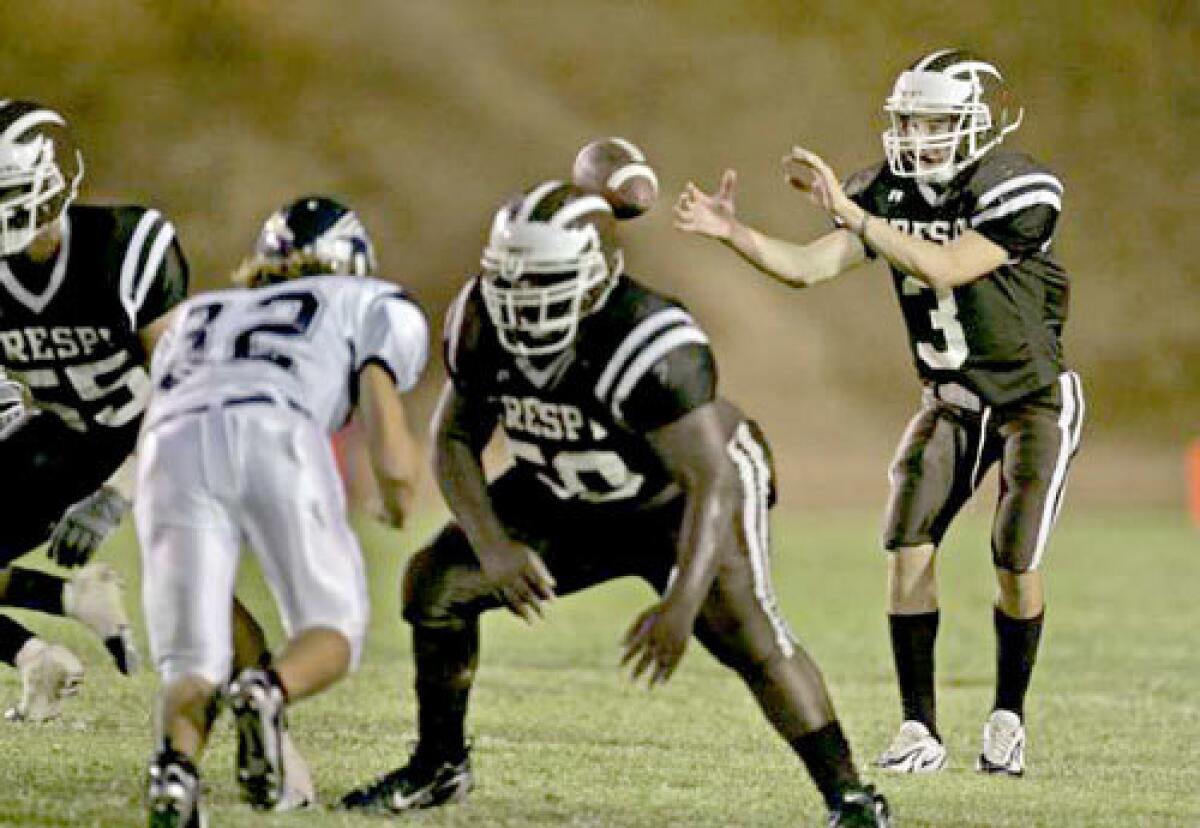
It took 25 years of coaching high school football at the varsity level before a skeptical Kevin Rooney of Sherman Oaks Notre Dame finally embraced the shotgun formation in 2004.
“I was never against the shotgun,” Rooney said. “I felt it didn’t fit in with what we were doing.”
Rooney had a fast, versatile quarterback in Garrett Green, so he discovered that having the center hike the ball a couple of yards into the backfield gave Green a better chance to maximize his athletic skills.
FOR THE RECORD:
High school football: In Wednesday’s Sports section, a photo caption accompanying an article about use of the shotgun formation by local high school teams said the quarterback pictured was Crespi High’s Kevin Prince. The quarterback pictured was Crespi’s Bryan Bennett, who is filling in for the injured Prince. —
Now, 6-foot-5 Dayne Crist is the latest Notre Dame quarterback to benefit from Rooney’s willingness to keep experimenting with the shotgun. Last week, Crist rushed for 74 yards and passed for 166 yards in the Knights’ season opener, a 17-7 victory over Canyon Country Canyon.
“Everything changes, but I think at this point in time, it’s obviously going to be here for a long while,” Rooney said.
Throughout Southern California, high school teams in growing numbers are using the shotgun formation, and not just for passing. The ability to run the ball out of the shotgun is the main reason it has become an acceptable formation in the eyes of coaches who are adamant about running first.
“What really made it widespread is when Urban Meyer started running the ball so effectively at Utah,” Venice Coach Angelo Gasca said.
Even Jeremiah Ross, the coach at Encino Crespi who’s a former offensive lineman and believes in trying to pound opponents, has become a shotgun advocate. Every Crespi offensive play starts out of the shotgun.
“The thing is evolutionary,” Ross said. “The reason people stayed away from it was it was looked at as a throwing formation. People have shown you can run with it.”
Quarterbacks remain the most enthusiastic supporters of the shotgun. It gives them more time to read the defense and avoid an oncoming rusher.
“I’m definitely benefiting,” Crist said. “It puts you in a very successful position. It gives you a lot of options.”
Dave White, long-time coach at Huntington Beach Edison, said one of his quarterbacks from the 1990s came up to him recently and complained, “How come you didn’t use that offense with me?”
“Now the emphasis is on passing,” White said. “Back then, we’d throw 10 times a game. Now it’s 30 times. The good coaches evolve with the game. When we have a great quarterback, we’re going to throw it.”
And Edison has a top quarterback this season in UCLA-bound Nick Crissman, who passed for 3,094 yards as a junior primarily out of the shotgun formation.
Meyer, now the coach at national champion Florida, has incorporated a triple option and made it fashionable for a quarterback to freelance in the backfield.
It’s the perfect offense for quarterback Matt Scott of Corona Centennial. His speed and versatility put pressure on defenders, who don’t know when he might run.
“It’s proven to work well,” Scott said. “We’ve had a lot of success with it.”
On Friday night at Pierce College, Crespi plays Centennial in a FSN Prime Ticket game in which both teams will line up 100% of the time in a shotgun, but the emphasis will be on running. That’s the amazing evolution of the formation.
“There’s so many different aspects of the offense you can use,” said Crespi quarterback Kevin Prince, who’s out for the season because of a knee injury. “It’s a lot more beneficial than being under center.”
But how does a formation that was once used mainly in junior high flag football games suddenly become such a hot commodity?
“It’s sort of a fad,” San Clemente Coach Eric Patton said. “Everything comes down from college and the pros.”
Gasca remembers watching video of John Elway as a high school quarterback at Granada Hills in the late 1970s, running the shotgun with a bad knee.
“He dragged himself around,” Gasca said. “You’re further from the blitz, get more line protection and more time to get rid of the ball.”
There are negatives to the shotgun. If the center doesn’t snap the ball on a line drive or it hits the ground, problems are immediate. And shotgun teams seem to have trouble moving the ball once they reach deep into their opponents’ territory.
“Around the 20-yard line, it’s a lot tougher to make yards,” Gasca said. “A lot of teams get bogged down.”
How long the shotgun will stay en vogue remains to be seen.
“If you save your playbook long enough, you can reuse it because it will go back in style,” Gasca said.
Eric Sondheimer can be reached at
eric.sondheimer@latimes.com
More to Read
Get our high school sports newsletter
Prep Rally is devoted to the SoCal high school sports experience, bringing you scores, stories and a behind-the-scenes look at what makes prep sports so popular.
You may occasionally receive promotional content from the Los Angeles Times.

